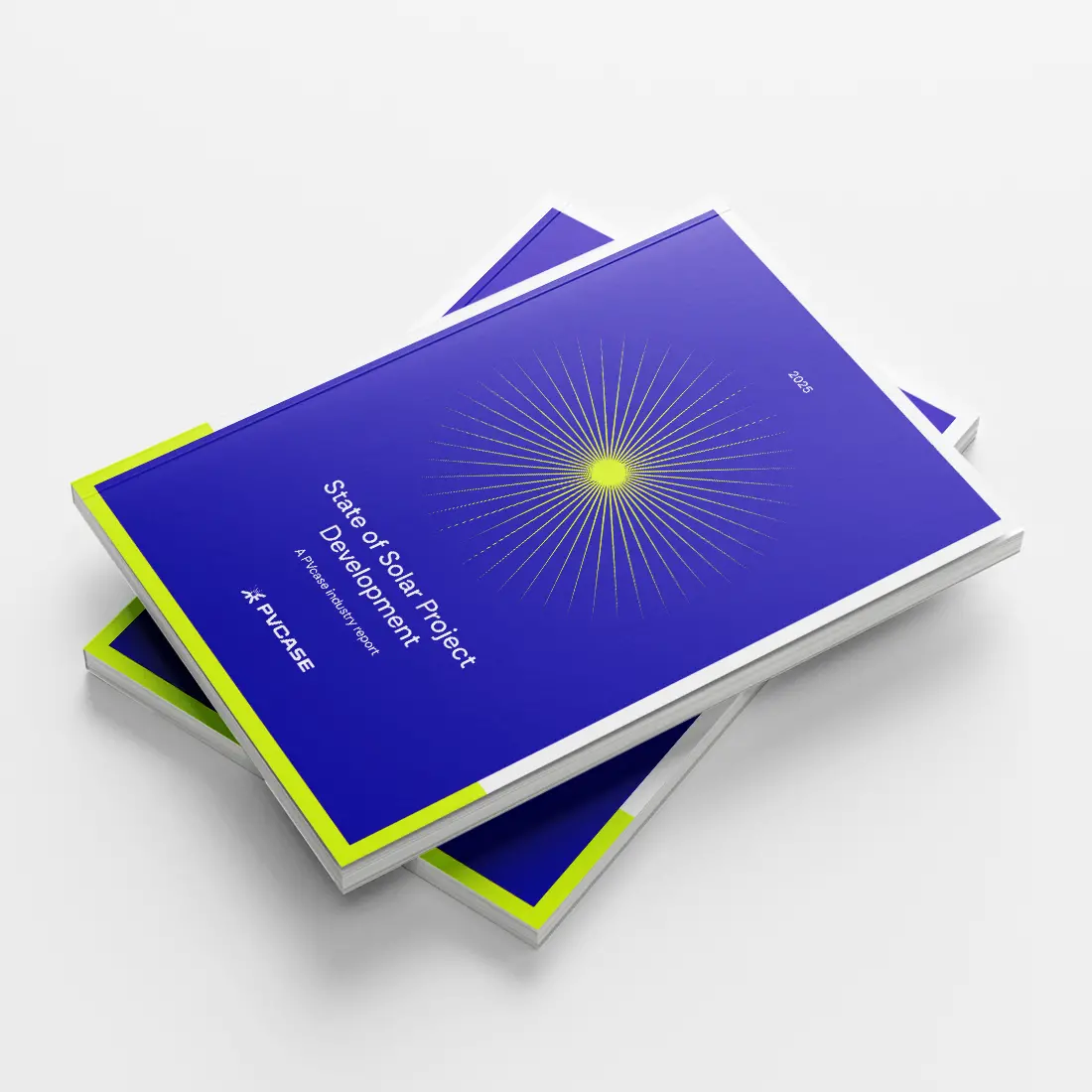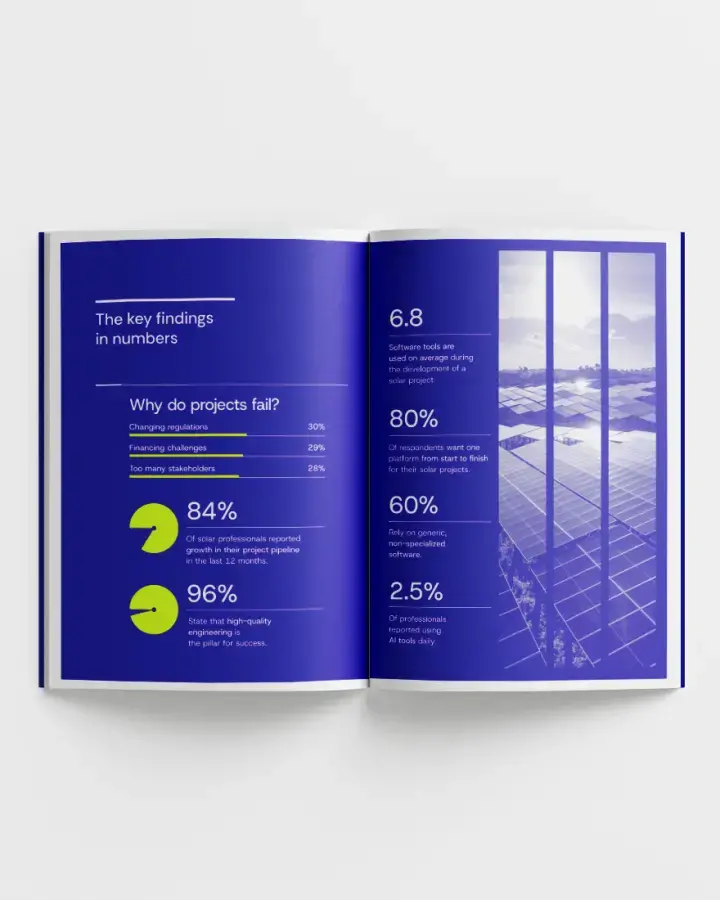The state of solar: why booming growth is exposing flaws in project delivery


The solar industry remains confident despite much-publicised headwinds. Professionals around the world expect continued growth in their project pipelines, with a near-unanimous belief that solar will soon become the world’s main power source by 2050.
But while this rapid expansion is a cause for optimism, it has intensified a set of challenges — ones that are not always visible but are the cause of most project setbacks.
The 2025 State of Solar Project Development report uncovers these latent obstacles and the way they test the day-to-day work of solar professionals globally.
Based on an anonymous online survey of over 400 solar professionals conducted in June 2025, it balances a cross-section of respondents from the United States, Germany, Spain, and Italy.
Indeed, this research provides a unique view into the biggest hurdles facing the industry today and serves as a guide for understanding the operational realities that determine a project's success or failure.
The solar house of cards: building on a fragile foundation
If a solar project has a solid design and a great site why would it fail?
Our research reveals that the answer lies in the complex, data-intensive period that precedes construction. This "pre-construction Valley of Death," which extends from initial site selection through to financial close, is where a majority of projects falter. The top reasons for project failure are external — challenges in financing, regulatory uncertainty, and having too many stakeholders.
However, these hurdles also highlight the weak internal foundations many failing projects possess, mainly due to inefficient workflows. This latent internal flaw is exacerbated in the context of the industry’s booming growth, as it can mask deep-seated operational vulnerabilities.
Major workflow bottlenecks destabilizing projects include:
Lack of standardized process
Lack of async communications
Lack of alignment on priorities
What the vast majority of respondents agreed on, is that high quality engineering is fundamental to project success, and ensure the project is not kicked back by permitting authorities or by financing committees.
From rework to revenue loss
Project reworks and redesigns are further hurdles in the path toward realization.
52% of professionals report that more than a quarter of their solar project designs require significant revisions after the initial design phase is complete. This means losing valuable engineering hours and delaying procurement and construction schedules, ultimately eroding the profitability of projects and entire portfolios.
Furthermore, the industry’s reliance on a patchwork tech stack is another key contributor to fragility. Our survey found professionals are juggling an average of nearly 7 different software tools, with 60% of the total 331 cited being non generic, non-specialized software like Excel and AutoCAD.
This approach has a clear consequence: communication bottlenecks, data silos, and significant project rework. The result is a cycle of manual data transfers and software compatibility issues that affect most projects.
The inability to align teams and maintain clear communication is especially detrimental when managing a multitude of stakeholders and, subsequently, securing enough financing. Thus, it confirms that the challenge of project failure is fundamentally rooted in a company’s operational capability, not just external pressures.

A varied funding landscape
The complexity of the pre-construction phase is also very apparent in financing. Our analysis of funding composition shows that no single source holds a majority stake, creating a multifaceted funding environment that combines private equity, bank loans, subsidies, and to a lesser extent, institutional investment and venture capital.
This variety translates into developers having to satisfy the distinct requirements of various sophisticated financial partners.
The good news is that the report also points to developers having greater access to liquidity to invest in new projects, resulting in a relatively lower impact of interest rates on project financing.
According to the survey, solar projects are typically financed with 55% equity and 44% debt, which contradicts the conventional rule of thumb of a 70/30 debt-to-equity ratio.
The BESS conundrum
The integration of Battery Energy Storage Systems (BESS) is a huge opportunity for solar, but it also magnifies existing problems. The same workflow challenges facing solar projects are even more acute when BESS is involved, making project development more precarious.
BESS introduces new hurdles such as cost-benefit analysis and technical complexity. This begs the question of whether the industry’s current fragmented tools and inefficient workflows are even capable of handling this next era of solar.
A global problem, localized hurdles
While these challenges are global, they present themselves differently across markets.
In Germany, the main hurdle is site selection in a densely populated nation.
In Spain, the primary bottleneck is a "human hurdle" of managing a wide array of stakeholders.
In Italy, regulatory uncertainty is the main roadblock.
In the U.S., professionals show the most urgent demand for a better way to work, highlighting that this problem is top-of-mind for them.
The path forward
The data shows that the solar industry’s immense potential is at risk of being bogged down by its own complexity. The time for a new approach is now. Professionals are united in what they believe the solution should be—a new generation of tools that can unify people, data, and processes.
This vision for a unified future is what will ultimately define the next era of solar project success. The 2025 State of Solar Project Development report offers a deeper look into this new reality, providing the data and insights to help you get there.

Download the full report
Explore the insights, find out the solar professionals' demanded solutions, and get a best practices checklist to ensure your projects' success.


